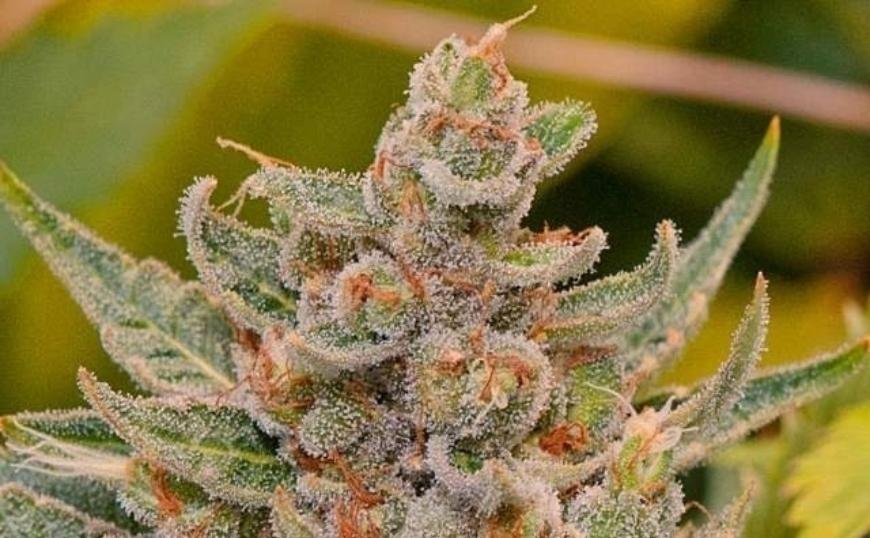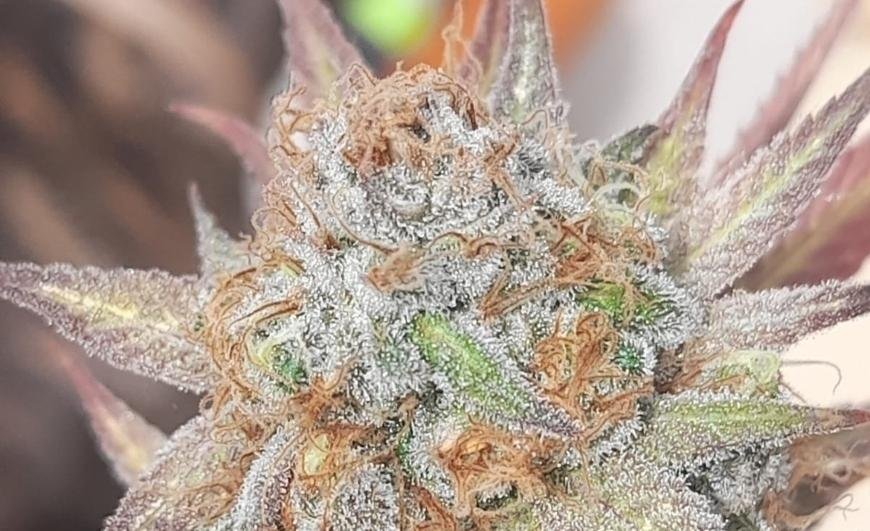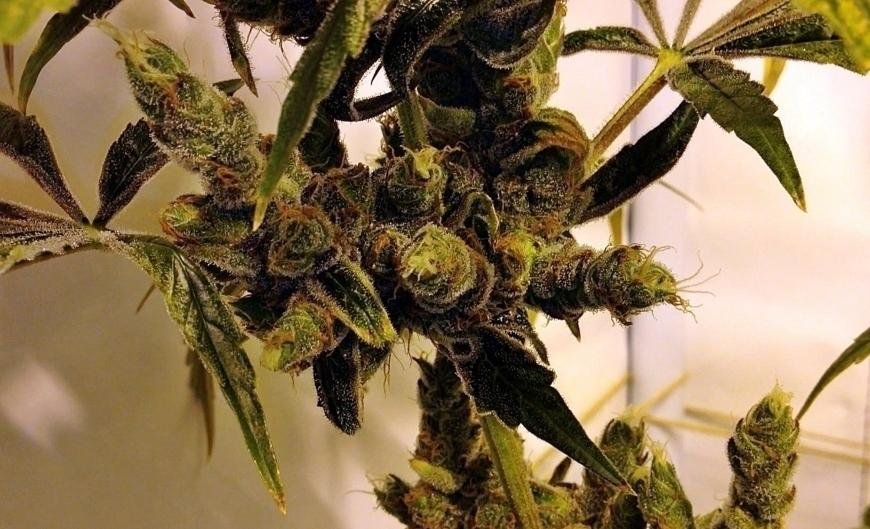Tangie Strain
The Tangie Strain, a sativa-dominant hybrid with a unique citrus aroma. Learn about its origins, growth, and effects in our comprehensive guide.

If you're looking to explore the world of cannabis strains, Tangie Strain is one that should definitely be on your radar. This sativa-dominant strain has gained quite a reputation for its unique citrus aroma and uplifting effects. This post will take a look at the interesting background, genetics and family tree of this noteworthy strain.
As we continue our exploration, we'll discuss how to successfully grow Tangie Strain indoors or outdoors and examine its THC, CBD, and other cannabinoid levels. Furthermore, we'll provide insights into the effects it produces as well as its distinct flavor profile.
By the end of this comprehensive guide on Tangie Strain, you'll have all the information necessary to appreciate why it's become such a popular choice among homegrown cannabis enthusiasts.
Table of Contents:
- Overview of Tangie Strain
- History of Tangie Strain
- Genetics and Lineage of Tangie Strain
- Growing Tangie Strain
- THC, CBD, and Other Cannabinoid Levels
- Effects of Tangie Strain
- Flavor of Tangie Strain
- Conclusion
Overview of Tangie Strain
The Tangie strain is a highly sought-after sativa-dominant hybrid marijuana strain known for its refreshing tangerine aroma and uplifting effects. This renowned marijuana strain has made an impact in Amsterdam's coffeehouses and is currently getting more attention in other regions too. With its unique flavor profile, sticky buds, and euphoric yet relaxed high, it's no wonder that Tangie has become a favorite among young adults looking to enjoy recreational cannabis.
- Type: Sativa-dominant hybrid (70% Sativa / 30% Indica)
- Aroma: Refreshing tangerine with hints of skunkiness from its Skunk #1 parentage
- Buds: Sticky, resinous buds with vibrant orange hairs and frosty trichomes coating the surface
- Growth Pattern: Best grown outdoors due to its tall stature and need for ample sunlight; however, indoor cultivation can be achieved with proper care.
Recently, Tangie has been gaining traction among cannabis users of all levels; connoisseurs appreciate its flavor and strength while novices find it a good introduction to the world of growing their own. Its appealing taste combined with potent effects make it an ideal choice for those seeking a flavorful smoking experience without sacrificing potency. Whether you're new to growing your own cannabis or are an experienced cultivator looking to expand your collection, Tangie makes an excellent addition to any garden.
The Tangie strain is a popular and potent sativa-dominant hybrid that has gained popularity for its citrus aroma and flavor. Its history can be traced back to the 1990s, when it was created by crossing California Orange with an unknown Skunk variety. Digging deeper, let's examine the origin of Tangie Strain.
History of Tangie Strain
The history of the Tangie strain can be traced back to its origins in Amsterdam, where it quickly gained popularity among cannabis enthusiasts. This sativa-dominant hybrid is a modern remake of the highly sought-after Tangerine Dream strain that was prevalent during the 1990s. The original Tangerine Dream was known for its refreshing citrus aroma and uplifting effects, making it an ideal choice for daytime use.
Tangie, like its predecessor, boasts a unique tangerine scent and flavor profile that sets it apart from other strains on the market. Its creation is credited to DNA Genetics, who crossed California Orange with Skunk-1 to develop this flavorful and potent sativa hybrid.
- Amsterdam Origins: Tangie's rise in popularity began in Amsterdam's coffee shops before spreading across Europe and eventually reaching North America.
- DNA Genetics: The renowned breeders at DNA Genetics are responsible for creating this revitalized version of Tangerine Dream by combining two classic strains - California Orange and Skunk-1.
- Award-Winning Strain: Since its introduction, Tangie has won multiple awards at prestigious cannabis events such as the High Times Cannabis Cup due to its exceptional taste and effects.
In recent years, Tangie has become increasingly popular worldwide thanks to both recreational users seeking an energetic high as well as medical patients looking for relief from various ailments without sedative side-effects often associated with indica strains. The Tangie strain produces a dark green bud with a citrus aroma that can be grown both indoors and outdoors. Its homegrown cannabis is known for its potency and uplifting effects.
The sour tangie is a hybrid California Orange and skunk strain that produces a strong citrus aroma. The tangie strain indoors is a popular choice for growers due to its high yield and fast flowering time. The tangie strain outdoors is also a viable option for growers in warmer climates.
As more people discover this delightful citrusy strain, there's no doubt that Tangie will continue making waves within the global cannabis community.
The history of Tangie Strain is a long and interesting one, full of fascinating stories about its origins. With such an intriguing past, it's no wonder why the genetics and lineage of this strain are so important to understand.
Genetics and Lineage of Tangie Strain
The Tangie strain boasts an impressive genetic lineage, as it is a cross between two well-known strains: California Orange and Skunk-1. This combination gives Tangie its unique tangerine aroma and flavor profile while also contributing to its uplifting effects.
In the 1990s, breeders experimented with various citrus-flavored cannabis strains to create a more stable version of Tangerine Dream that retained its desirable traits. The original Tangerine Dream was one such popular strain during this time, but it eventually fell out of favor due to inconsistent genetics. In response, Amsterdam-based seed company DNA Genetics set out to create a more stable version that retained the desirable traits of Tangerine Dream.
- Cannabis Cup: Since its introduction in 2012, Tangie has won multiple awards at prestigious events like High Times Cannabis Cup.
- Breeders' Choice: Thanks to its strong lineage and appealing characteristics, many growers consider this sativa-dominant hybrid their go-to choice for cultivating flavorful buds with potent effects.
Tangie's genetic makeup consists predominantly of sativa genes (70% Sativa / 30% Indica), which contribute significantly towards producing energizing cerebral effects on users. This sativa-dominant hybrid is known for its uplifting and creative high, making it a popular choice among artists, writers, and other creative professionals.
The Tangie strain has a unique lineage and genetic composition, making it an interesting choice for recreational growers. With the right growing conditions, this strain can be easily cultivated to yield potent buds with high THC levels. Moving on from genetics, let's look at how best to grow the Tangie Strain for optimal results.

Growing Tangie Strain
To achieve the best results when growing this sativa-dominant plant, it's essential to follow specific guidelines.
Tangie thrives best in an outdoor environment, as it requires ample sunlight and space for optimal growth. However, with proper care and attention, indoor cultivation can also yield successful results. When grown indoors, ensure adequate lighting and controlled temperature conditions are maintained.
A well-draining soil mix rich in organic matter is ideal for cultivating Tangie plants. To ensure optimal health and productivity of Tangie plants, a balanced mix of essential nutrients like nitrogen (N), phosphorus (P) and potassium (K) is necessary. You can find various pre-mixed cannabis-specific soils available on the market that cater to these requirements.
- Vegging: The vegetative stage typically lasts between 4-6 weeks for Tangie plants. During this time, they require at least 18 hours of light per day.
- Flowering: Once switched over to a flowering light schedule (12 hours on / 12 hours off), expect your Tangie's buds to mature within approximately 9-10 weeks.
To prevent pests and diseases, maintain a clean growing environment and consider using organic pest control methods. Pruning Tangie plants by removing lower branches and leaves can promote better airflow and light penetration, ultimately leading to higher yields.
The Tangie strain produces a citrus aroma and is a hybrid California Orange and Skunk strain. It is a sativa-dominant strain that can be grown indoors or grown outdoors. Tangie strain is known for its high yields and dark green buds. It is also commonly referred to as Sour Tangie or Skunk #1. Homegrown cannabis is an excellent option for those looking to cultivate Tangie strain indoors or outdoors.
The growing of Tangie Strain requires patience and dedication to achieve the best results. Before beginning the process of cultivating Tangie Strain, it is essential to be aware of its cannabinoid levels, including THC and CBD.
THC, CBD, and Other Cannabinoid Levels
The Tangie strain is well-known for producing potent levels of THC, ranging between 19% to 22%. This powerful THC potency makes it an ideal selection for recreational users in search of a stimulating and positive experience. On the other hand, Tangie's CBD content is relatively low, typically less than 1%, making it less suitable for those looking for significant medicinal benefits from their cannabis.
Aside from THC and CBD, Tangie also contains various other cannabinoids such as CBN, CBG, and THCV which interact with the body's endocannabinoid system in distinct ways. These lesser-known compounds contribute to the overall effects of this strain by interacting with the body's endocannabinoid system in different ways. For example, CBN has been found to have potential sedative properties while CBG may offer anti-inflammatory benefits.
- THC: 19-22%
- CBD: <1%
- Cannabinoids:
- CBN: Sedative properties
- CBG: Anti-inflammatory benefits
- THCV: Appetite suppressant effect
Beyond cannabinoids, Tangie also boasts a rich terpene profile responsible for its distinct aroma and flavor. Some of these terpenes include myrcene, which contributes to relaxation effects, or limonene, known for mood-enhancing properties. To fully appreciate the complexity of Tangie's effects, it is essential to consider its unique combination of cannabinoids and terpenes.
The levels of THC, CBD and other cannabinoids in the Tangie Strain are important to consider when consuming it. The effects of this strain on its users should also be taken into account before indulging.
Effects of Tangie Strain
The Tangie strain is known for its uplifting and energizing effects, making it a popular choice among recreational users seeking an enjoyable high. With its sativa-dominant genetics, Tangie offers a range of positive effects that can enhance your overall experience.
One of the most notable effects of the Tangie strain is the sense of euphoria it provides. This uplifting feeling often leads to increased creativity and focus, allowing users to engage in artistic pursuits or simply enjoy their surroundings more fully.
Tangie's energetic properties make it an excellent option for social situations. Users report feeling more talkative and outgoing after consuming this strain, which can help break down barriers in group settings or facilitate lively conversations with friends.
- Happiness: Many users find that Tangie helps improve their mood by inducing feelings of happiness and contentment.
- Anxiety Relief: While not specifically designed as an anxiety treatment, some people have reported reduced anxiety levels after using this strain due to its calming properties.
- Fatigue Reduction: The energy boost provided by Tangie makes it ideal for combating fatigue during daytime use without causing excessive stimulation at night.
In addition to these benefits, some medical marijuana patients also turn to Tangie for relief from symptoms such as chronic pain or depression thanks to its uplifting qualities. However, the effects of Tangie may differ for each person depending on factors such as tolerance and individual preference. Always consume responsibly and consult with a healthcare professional if you're considering using cannabis for medical purposes.
The effects can be quite powerful, ranging from a heightened sense of creativity to an increased level of relaxation. Next, let's look into the distinctive taste this strain provides.

Flavor of Tangie Strain
Its unique taste and aroma can be attributed to its rich lineage, combining the best characteristics of California Orange and Skunk-1.
One of the most striking features of Tangie is its tangerine aroma, reminiscent of freshly peeled citrus fruits. This invigorating scent not only adds to the overall experience but also hints at the uplifting effects that this sativa-dominant strain provides.
Beyond its tangerine fragrance, Tangie offers a delightful blend of flavors that excite your taste buds with every puff. Users often report tasting notes such as sweet oranges, zesty lemons, grapefruit undertones, and a hint of earthiness from Skunk-1 genetics. This complex yet harmonious combination makes for an enjoyable smoking or vaping experience, leaving you wanting more.
The flavorful profile of Tangie can be credited to its terpenes - organic compounds responsible for producing distinctive scents and tastes in plants like cannabis. The primary terpenes found in this strain are:
- Limonene: Provides citrusy notes and potential mood-enhancing effects.
- Myrcene: Contributes earthy tones while potentially promoting relaxation.
- Caryophyllene adds a peppery zest and may offer anti-inflammatory benefits, rounding out the signature flavor profile of Tangie.
Together, these terpenes create the unique sensory experience that has made Tangie a favorite among cannabis enthusiasts worldwide.
Conclusion
Overall, Tangie Strain is a popular cannabis strain among young adults who enjoy recreational growing and drug use. Its unique flavor profile and potent effects make it a favorite for many. The history, genetics, growing methods, cannabinoid levels, effects, and flavors of Tangie Strain have been discussed in detail above.






































































































































